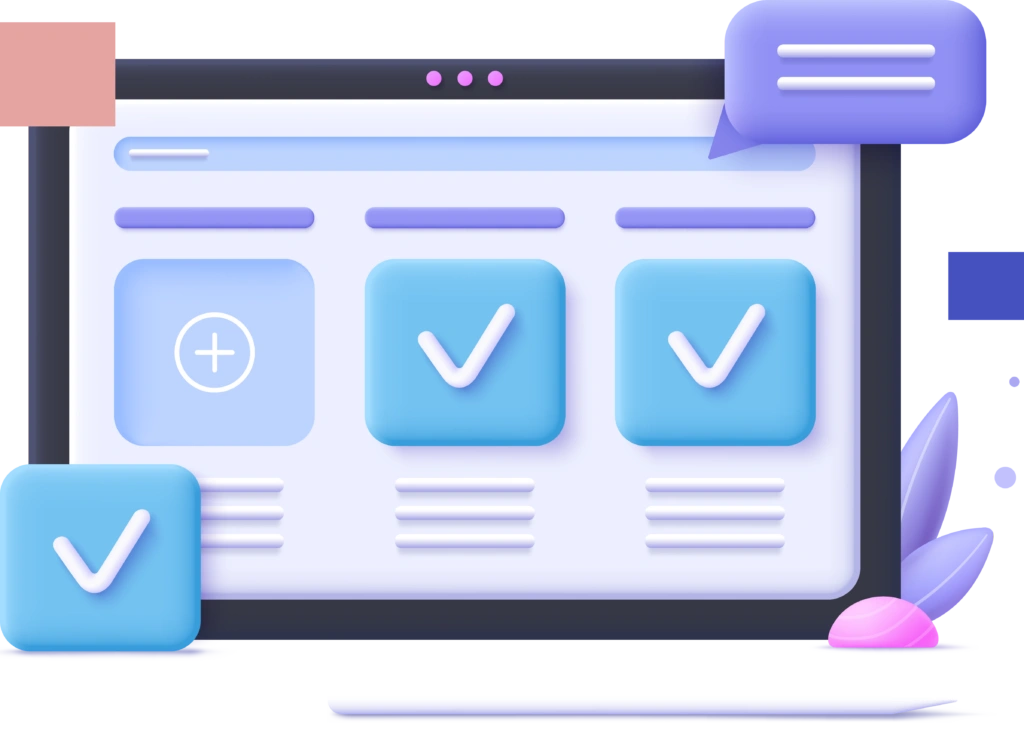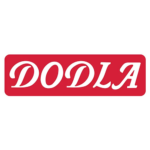What are the Challenges Faced by Financial Institutions in absence of Financial Document Management Software?
A financial institution is a unit engaged in dealing with financial transactions such as deposits, loans, investment, currency exchange, etc. A broad range of businesses, namely, banks, insurance companies, investment dealers, etc. fall under this category.
These institutions play a crucial role in the economy—in the form of banking, insurance, or securities markets by facilitating the flow of money and aiding individuals to manage their financial affairs easily. But running these institutions is not as easy as it appears!
This is because financial institutions involve a myriad of operations that demand utmost precision and accuracy. Besides managing the movement of money, these organisations need to manage
- data of financial transactions of thousands of customers
- legal documents and
- compliance reports.
All the transactions are also required to be documented as records for future reference.
This industry thus heavily generates numerous document types and their infinite records, all requiring secured and efficient management. Traditional document management system can’t meet the evolving needs of this highly regulated industry. A web-based Document Management System that is easy to use, offers accessibility and is high on features, is the need of the hour and QualityPro DMS fits the bill perfectly.


How Does Document Management System for Financial Services Help Address These Challenges?
QualityPro DMS is a document management system designed to store, organise, and manage all the business-critical documents in a digital format. It serves as a centralised repository for documents allowing users to create, collaborate, search, retrieve, and track documents in an efficient way.
This cloud-based digital platform allows users to manage the complete lifecycle of documents that too in a controlled and secured environment over the cloud. This makes them accessible from anywhere and through any device.
The implementation of this DMS can serve as a strategic asset for financial institutions, guaranteeing compliance, strengthening data security, and improving operational efficiency. Simultaneously, it diminishes risks, builds customer trust, and streamlines the audit process.
Your path to better quality management starts here
Explore the unparalleled features of this DMS Software for Financial Institutions

Quickly create a new document from scratch or scan and attach the existing ones, along with facilitating easy categorisation based on file type, data type, etc.
Helps manage numerous versions of documents along with maintaining a log of who made the changes and when.
Tracks and maintains the complete audit trail of all the document related activities happening within the organisation.
Enforcing document access control via passwords and ensuring role-based access is a prominent feature of this DMS.
Easily index and search documents by applying relevant metatags and metadata, allowing for efficient retrieval from the document library using different search terms and applicable tags.
Use the check-in/check-out system to capture changes and facilitate smart collaboration while preventing overwriting.
Implement approval workflow for critical and important documents before making them an officially released version. At any point in time, approve, cancel, and reject the document before release.
Customise pre-defined folders to your requirements, including assigning individual access rights.
Don’t wait! See how various organisations streamlined quality with QualityPro
Explore the unparalleled features of this DMS Software for Financial Institutions
Quickly create a new document from scratch or scan and attach the existing ones, along with facilitating easy categorisation based on file type, data type, etc.
Helps manage numerous versions of documents along with maintaining a log of who made the changes and when.
Tracks and maintains the complete audit trail of all the document related activities happening within the organisation.
Enforcing document access control via passwords and ensuring role-based access is a prominent feature of this DMS.
Easily index and search documents by applying relevant metatags and metadata, allowing for efficient retrieval from the document library using different search terms and applicable tags.
Use the check-in/check-out system to capture changes and facilitate smart collaboration while preventing overwriting.
Implement approval workflow for critical and important documents before making them an officially released version. At any point in time, approve, cancel, and reject the document before release.
Customise pre-defined folders to your requirements, including assigning individual access rights.
Why Choose QualityPro DMS for Financial Institutions?
Implementing QualityPro DMS solution benefits financial institutions in numerous ways-
- Easy-to-use Interface: Navigating the user-friendly interface of QualityPro DMS doesn't require technical expertise. It’s easy. It’s clear. It’s intuitive.
- Web-Based Solution: Besides ensuring low-cost implementation, the web-based version offers accessibility, collaboration, and real-time tracking of quality-related activities. Moreover, automated updates keep businesses in-line with latest norms.
- Customisable Fields: Thoughtfully built to unique data needs, QualityPro offers customisation of fields as per company’s policy.
- Fast and easy Implementation: QualityPro provides the flexibility of dual implementation modes—Self and Vendor Guided—allowing users to choose according to their preferences.
- Any Business Size: Caters to the requirements of companies of any size including small startups, medium and large enterprises.
- Scalability: Effortlessly meet the needs incepted by the growth of your organisation as QualityPro can scale as you grow and expand.
- Flexible and Secure: Completely secured with authenticated logins, encrypted data, best-of-breed security systems, 3-tier backup, and recovery plan, etc., so that you are in peace, always!

Trusted by Industry Leaders





“Just one click, and you are one step closer to a transformation”
Know right away how QualityPro can transform your business
FAQs
A Financial Document Management System is a digital platform purpose-built for storing, organising, and managing business-critical documents within a centralised, secure repository. It enables financial professionals to create, collaborate, search, retrieve, and track documents with operational precision. This system is instrumental for financial institutions such as banks, credit unions, asset managers, and insurance firms, as it digitises records management, reduces paper dependency, and enhances operational workflows across departments including risk, compliance, finance, and customer service.
Deploying a Document Management System within a financial institution delivers measurable value through:
Improved Efficiency- Automates document-centric processes such as client onboarding, loan origination, and KYC, reducing manual intervention and mitigating human error.
Enhanced Security – Delivers secure storage and tiered access controls for sensitive financial records, including client files, transaction histories, and internal compliance documents.
Regulatory Compliance- Facilitates adherence to industry regulations through structured document retention, audit trails, and policy-based access.
Cost Savings – Minimises physical storage costs and administrative overhead by digitising legacy paper archives.
Better Customer Service – Enables relationship managers and front-office staff to retrieve documents rapidly, supporting faster decision-making and improved client turnaround times.
Key capabilities in financial-grade Document Management Software include:
Document Creation and Categorisation- Enables structured classification of records, such as client agreements, loan documents, insurance claims, or compliance reports.
• Version Control- Maintains historical versions for audit readiness and policy review.
• Access Control- Implements role-based permissions, ensuring adherence to internal governance and information security protocols.
Audit Trails- Provides immutable logs of document access and edits, supporting internal audits and regulatory inspections.
Cloud Accessibility- Offers secure access to documents across devices and geographies, supporting hybrid and remote financial operations.
Document Management Software supports regulatory compliance by:
Secure Storage – Digitally secures customer due diligence files, credit reports, and regulatory submissions in compliance with retention and archival policies.
Immediate Retrieval – Enables instant access to client records during audits, regulatory reviews, or urgent transaction validations.
Audit Trail – Tracks all document activities with timestamped logs, ensuring accountability and facilitating forensic audits.
In the banking sector, a Document Management System strengthens data security by:
Controlled Access – Uses granular permission settings to limit access to confidential files such as loan approvals, and internal memos.
Encryption – Applies encryption protocols for data-at-rest and data-in-transit to prevent unauthorised interception or breaches.
Audit Trails – Supports compliance teams by logging user interactions and document changes.
Yes, cloud-based Document Management Software is well-suited for financial institutions, offering:
Remote Accessibility – Empowers employees and relationship managers to securely access documents off-site, supporting flexible work environments.
Scalability – Accommodates growing volumes of financial records without extensive infrastructure investment.
Cost Efficiency – Reduces expenditure on physical filing systems, document logistics, and server maintenance.
Disaster Recovery – Ensures data redundancy and business continuity through automated backup and recovery mechanisms.
In banking, Document Management Software contributes to enhanced customer experiences through:
Quick Document Retrieval – Enables instant access to account opening forms, identification documents, and transactional histories during client interactions.
Streamlined Processes – Automates repetitive tasks such as loan processing and claims management, freeing up staff to engage meaningfully with clients.
Accurate Information – Ensures staff always refer to the latest version of a document, improving accuracy in financial advice and documentation.
Secure Communication – Facilitates encrypted document sharing with clients, reinforcing confidentiality and client trust.
Implementing a DMS within a financial institution typically involves:
- Needs Assessment – Evaluating operational pain points, compliance obligations, and departmental requirements.
- Vendor Selection – Identifying a technology partner whose platform aligns with financial industry standards and integration requirements.
- System Configuration – Customising workflows for processes like loan origination, and policy issuance.
- Data Migration – Transferring historical data and scanned documents while ensuring indexing and metadata integrity.
- Training – Delivering tailored training to compliance, operations, and frontline teams for smooth adoption.
- Testing and Go-Live – Conducting user acceptance testing (UAT) to ensure functionality prior to full-scale rollout.
- Ongoing Support – Establishing support to maintain system performance, updates, and regulatory alignment.




